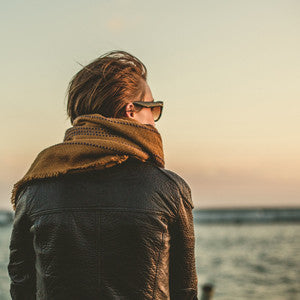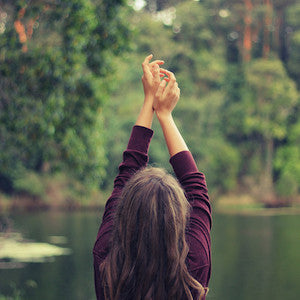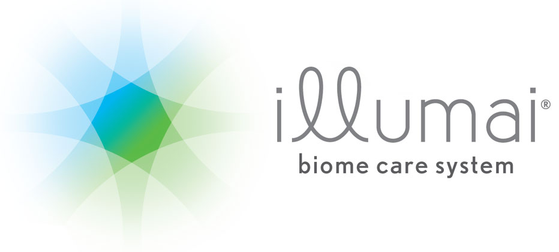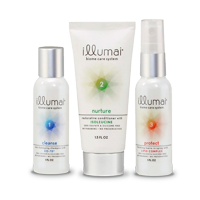7 Tips to Ageless Hair

4 common signs of Aging Hair - and what to do about them
Most people aren't prepared for that first gray hair that usually appears sometime in their mid-30s. Luckily, hair color is a well-advertised solution to this first sign of aging hair. What comes as a shock are the texture and volume changes that follow shortly after. You might be left wondering what happened overnight. Unfortunately hair, like skin, changes with time. Your hair care routine might not produce the same results it once did.
No matter how cruel time seems, you don’t have to take it lying down. Read on to learn more about why your hair changes, and how to keep your locks healthy and vibrant with simple anti-aging tips.
Is This What’s Happening?
- Going Gray. That first errant gray almost seems cute. By the time we hit 50, 50% of us are half gray – not so cute anymore. This is because the cells that determine hair pigment (called melanocytes - made from melanin) begin to slow in production, eventually coming to a halt. Without the presence of melanin, hair not only appears gray or white, the cuticle becomes finer and more fragile too.
- Dry Hair. Our hair makes a natural protective oil called sebum. Made in the sebaceous glands, sebum travels from the follicle down to the end of your hair shaft to waterproof and protect your biome. With the passage of time, the sebaceous glands being to shrink and oil production slows. By the time most people hit 40, they notice hair that’s drier and looks duller than before.
- Brittle Hair. Just like the skin, hair loses elasticity as we age. And chances are, the older you are, the more products you are using to try and bring back the hair of your youth. Hair color, bleach, straighteners, sulfate shampoos are all loaded with chemicals that leave your changing hair brittle, weak and prone to more damage. They also make your scalp increasingly irritated, itchy and/or flaky.
- Thinning & Loss. The average person loses about 100 hairs per day, no matter what their age. But both men and women may see hair loss increase they get older. Growth cycles begin to slow - that means when hairs are shed, they take longer to be replaced. To add insult to injury, our hair follicles begin to shrink as well. The hairs they produce actually become smaller in diameter, creating a noticeable loss in volume.
If you're 30 or older, your hair is likely aging. But enough bad news... let’s get to the encouraging part: keeping your hair strong and youthful is simple! Here’s how:
- Go Sulfate-Free. If you haven’t made the switch yet, now is the time to go sulfate-free. There’s a myriad of reasons why sulfates damage the biome, and aging hair even more susceptible.
- Wash Less. Because sebum production as slowed, you won’t need to wash your hair as often. Do your hair a favor and skip a wash every other day (or more!)
- Get Your Protein. In your hair treatments, that is. Look for conditioners that contain a protein like Isoleucine – this will help strengthen and fortify your strands from the outside in.
- Moisturize. Aging hair needs more moisture than before. Lightweight sprays containing healthy lipids can add moisture and protect your strands from elemental damage. While you’re at it, avoid using styling products that contain alcohol – they dry your hair even more.
- Turn Down The Heat. As your hair becomes finer and dryer, you won’t need your heat stylers on a high setting to achieve the same results. Keep them set on low heat to minimize damage.
- Eat Right. Leafy green vegetables (think spinach and kale), carrots, lean proteins and healthy fats (like those walnuts and avocados) all contain nutrients that contribute to follicle health and help keep your scalp oils circulating. Adding a supplement like biotin can help strengthen your strands, too.
- Balance Your Biome. Your dermal biome is the protective ecosystem of your hair and scalp. When it’s compromised, you’re left prone to damage symptoms like frizz and breakage. Look for products designed to keep your biome in balance - and remember, just because something is natural or organic doesn’t mean it will leave your biome neutral.
We can’t stop the passage of time, but we can be prepared. Fortunately, all it takes are a few simple steps for healthy, beautiful results at any age.
Learn More . . .

What are Sulfates? And Why Should You Care if a Shampoo is Sulfate-Free?
Sulfates, such as sodium lauryl sulfate (SLS), are chemicals used to create strong detergents. Because they are such efficient cleansers and degreasers, sulfates are commonly used in manufacturing and construction industries to clean heavy machinery.

Biome Care - Healthy Hair Starts Here


